Under eye wrinkles are a common problem, and often the first thing people recognize as a sign of aging. Under eye wrinkles are noticeable since people look directly at our eyes when communicating. When looking at the mirror, many people pull on their lower eyelid skin showing improvement of these wrinkles and assume they have extra skin they can remove with surgery. Many surgeons also believe this to be the case, so they also remove excess skin. However, removing lower eyelid skin can also lead to complications like lower eyelid retraction, eye exposure, exposing the lower eyelid, and skin shortage, all of which involve delicate and costly restoration procedures.
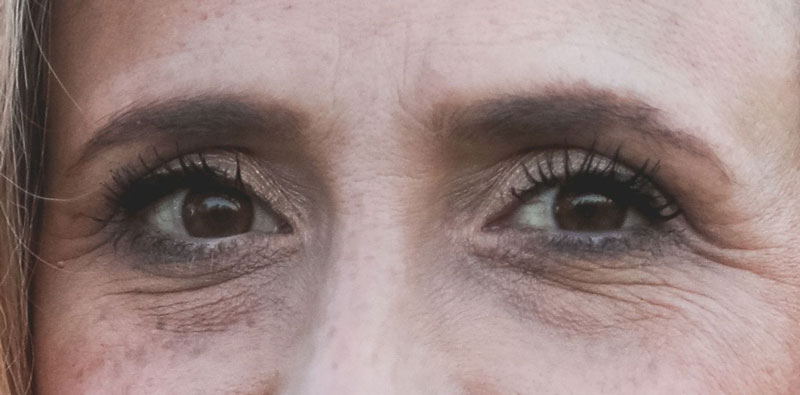
How Eyelid Wrinkles are Usually the Result of Diminished Skin Quality, Not Excess Skin Quantity
People often assume that their excess eyelid skin causes under eye wrinkles. This view is shared by many doctors who have limited training in lower eyelid surgery. Sometimes skin removal is performed in conjunction with eye bag surgery in an attempt to make the skin tighter and improve the look of wrinkles. However, if the skin was removed and the remaining skin is not lifted or anchored, it can lead to complications like lower eyelid retraction.
Under Eye Wrinkles Treatment
Lower eyelid wrinkles are caused by diminished skin quality, not excess skin quantity. The ideal treatments for almost all cases of under-eye wrinkles are non-surgical improvement of skin quality. Dr. Amiya Prasad often uses platelet-rich plasma, or PRP to improve eyelid skin thickness and health. PRP is a concentration of wound healing and growth factors present in your blood. PRP will be injected into the lower eyelid to stimulate collagen, improve blood supply, and thicken the skin, which all can help improve wrinkles.
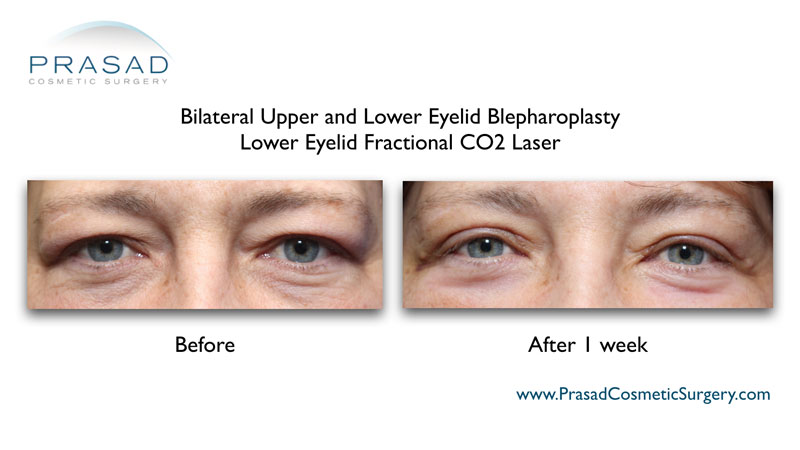
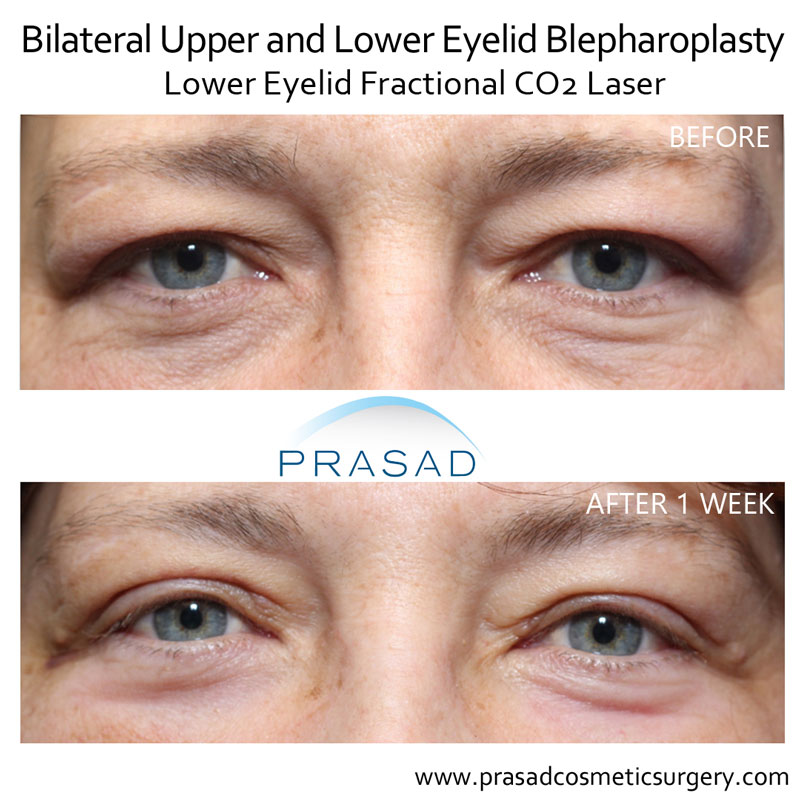
Thermal energy treatments such as laser and radiofrequency devices are also useful in tightening and resurfacing lower eyelid skin. Several lasers can help treat this area, from fractional CO2 laser, fractional erbium, and ND:Yag. Laser treatment can fully or partially remove the top layer of skin, allowing a fresh layer of skin to come in, which is commonly called skin resurfacing. They also stimulate collagen as part of a controlled injury response to heat being applied.
Laser treatments also tighten the skin through contraction as part of the response to heat. For darker skinned patients such as olive skin types and darker, the same principles of laser light treatments are applied, but to avoid hyper or hypopigmentation, Dr. Prasad uses a radiofrequency device like Pelleve in place of laser treatment.
Laser and radiofrequency treatments under the eyelids must be done carefully by an experienced practitioner to avoid thinning of the eyelid skin.
Eyelid skin is the thinnest skin in the body at 0.5mm thick, and excess removal of the top layer of skin with heating devices, in a process called ablation, can thin eyelid skin further. Overexposure to laser and radiofrequency devices needs to be avoided. Dr. Amiya Prasad alternates laser or radiofrequency treatments with PRP or combines thermal treatments with PRP to still get collagen stimulation necessary for healthier, thicker skin to limit exposure to heat.
It is also important to remember that heating devices are just tools, and it is the doctor’s experience with them that makes the difference in getting the results.
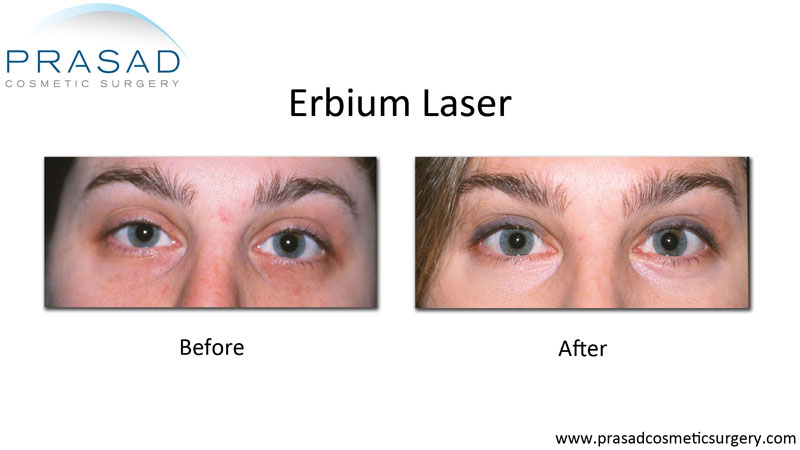
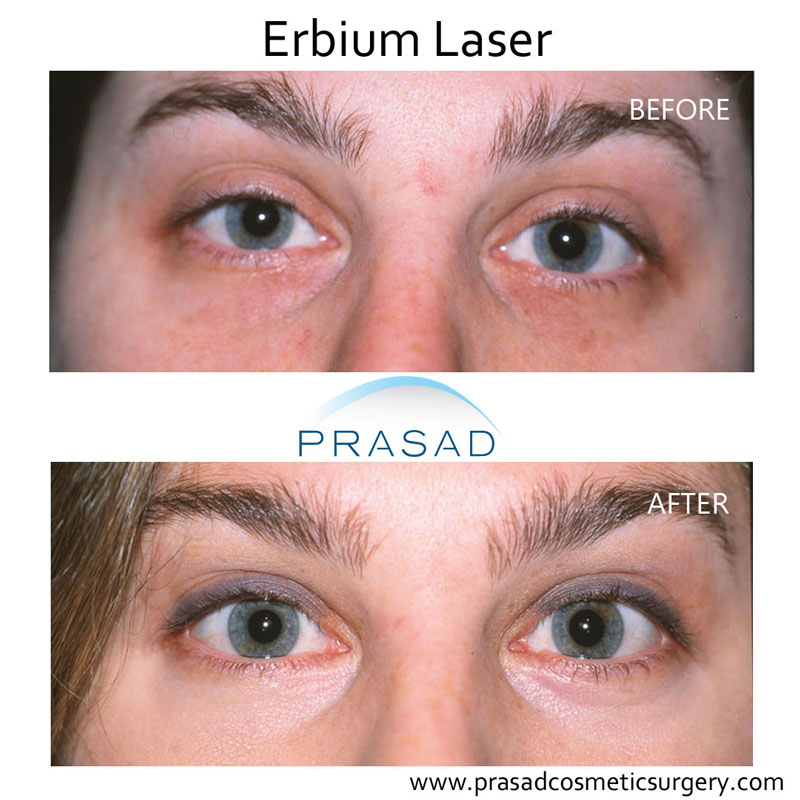
Improvement of the under eye area can also be achieved with professional microneedling. Professional microneedling devices such as the Dermapen can limit its depth to 0.25mm so it doesn’t injure the eye. Home use microneedles in the form of dermarollers are not recommended, especially in the under eye area. Dermaroller can’t limit its depth, unlike professional microneedling. The rolling action of derma rollers also stretches the holes in the skin unnecessarily.
Microneedling also works on a controlled injury-based model similar to laser treatment, where microholes are created in the skin, and the body reacts to this injury by producing more collagen in the area and improving the health and thickness of the eyelid skin.
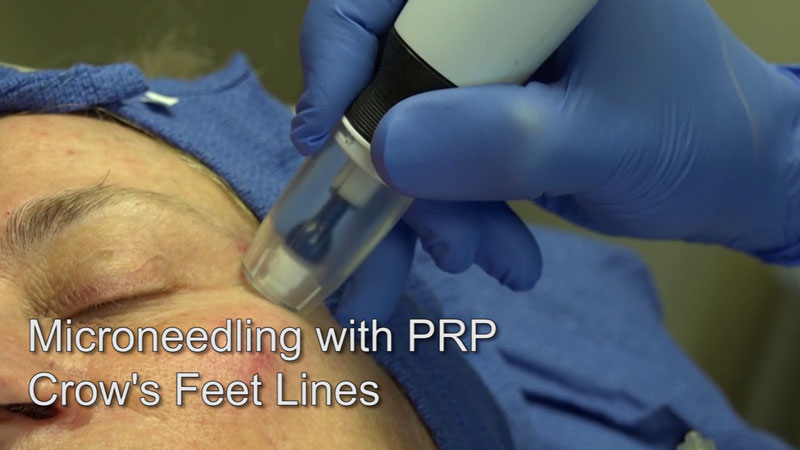
Microneedling can also be done in conjunction with platelet-rich plasma (PRP), which can be rubbed into the microholes for additional skin quality improvement and collagen stimulation. PRP can also be injected into the under-eye area between microneedling sessions.
All non-surgical under-eye wrinkle treatments may take more than one treatment session for best results. Skin quality improvement with PRP, lasers, radiofrequency, and microneedling build upon improvement made from the previous session. It is best to keep in mind that final results are not seen immediately, but a lot of improvement can be seen after one session.
Recovery
Recovery time for non-surgical wrinkle treatments is minimal. With PRP, some bruising may be experienced from the needle that may last a few days, but it is often avoided with proper technique.
While laser treatments of the past with fully ablative lasers could leave skin red and raw for weeks, current fractional lasers may result in mild redness or “holes” in the surface of the skin where the laser was directly applied, which can be visible for several days.
Microneedling can result in a bit of redness and maybe a little swelling, but this also lasts for just a few days. Patients usually go back to work the day after these procedures, with exception of platelet-rich plasma alone, where patients can return to work after the treatment. These procedures are generally safe to do 1-2 weeks before a major event such as a wedding.
How a Skin Pinch is an Appropriate Surgical Procedure for Patients with Excess Skin Folds Under the Eyes
In rare cases where the under eye skin folds and rolls over, a surgical procedure called a skin pinch is considered. Having excess lower eyelid skin is exceedingly rare, even among older patients. The skin pinch is a specialized procedure, and usually, very little skin is excised to avoid potential complications.
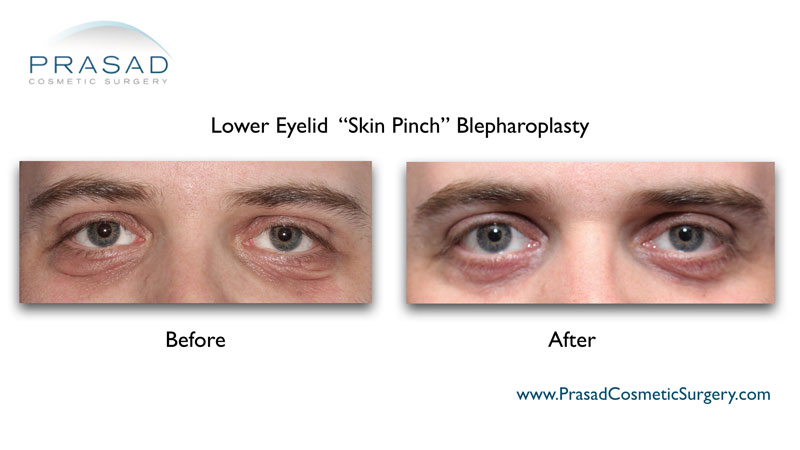
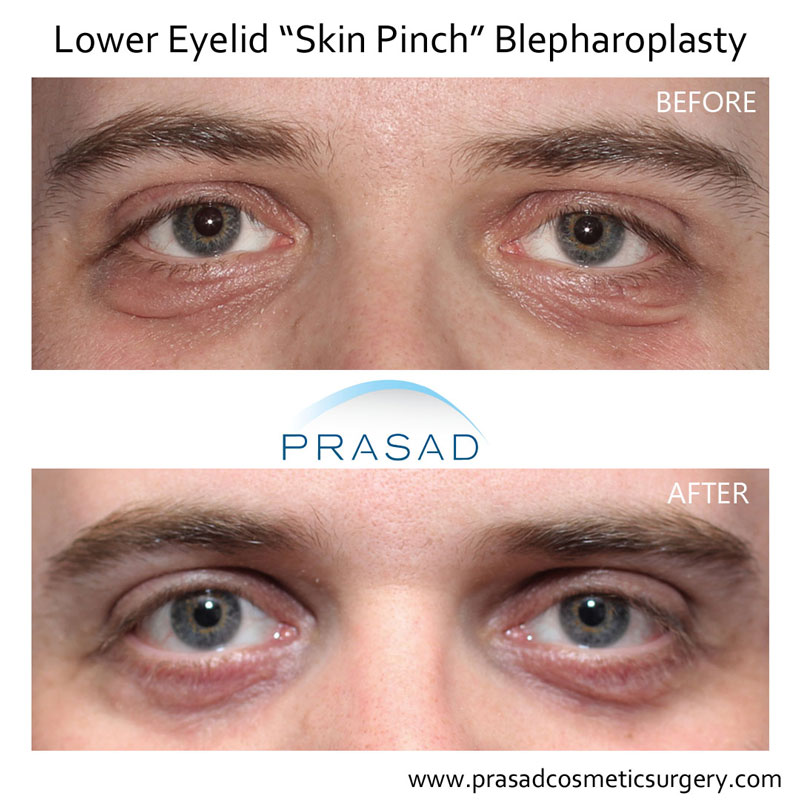
The skin pinch and non-surgical wrinkle treatments are normally done in conjunction with under eye bag surgery to sculpt and remove the fat that causes eye bags. Dr. Prasad’s preferred approach to under eye bag surgery is transconjunctival blepharoplasty. Transconjunctival blepharoplasty completely avoids an external incision and better preserves lower eyelid support structures.
Lower eyelid blepharoplasty with skin pinch takes a little more recovery time. However, when it is done with local anesthesia with LITE IV sedation, patients normally return to work in about a week.
The Goal of Wrinkle Treatment is Improvement of Appearance, Not Complete Erasure
The vast majority of under eye wrinkles can and should be treated without surgery, and with minimal if any downtime. Keep in mind that wrinkles can be visibly improved, but not completely erased. Going in with the expectation of improvement of appearance rather than complete reversal will make you more satisfied with treatment. Look for doctors who are experienced with laser and radiofrequency treatment, PRP, microneedling, as well as advanced lower eyelid surgery to have the best recommendations for your particular case and skin type.
About Dr. Prasad
Cosmetic procedures are a core of Dr. Amiya Prasad’s practice. He performs upper and lower eyelid surgeries every day, and revises and restores eyelid surgery complications from procedures originally performed by other doctors. Follow the link to know more about Dr. Amiya Prasad, and fill up the form below to schedule a consultation.
